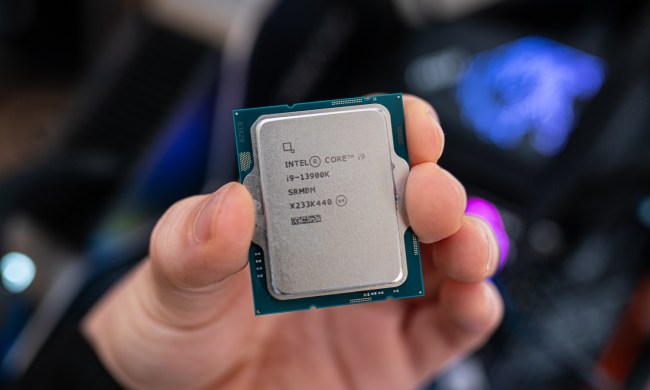At the recent Intel Accelerated event, the company teased a road map through 2025. Instead of talking about specific products, Intel focused on different ways to make a processor. Now, a leaker may have put names to faces, laying out the specific products Intel is working on.
On the Anandtech forums, a user was quickly able to grab a Reddit post before it was deleted. The Reddit leaker, mooreslawisnotdead, deleted their account almost immediately after the post, and it hasn’t been verified or backed up by other leakers. It could be real, but it could also be pure speculation.
Let’s start with the products we already know about. Alder Lake is coming later this year, built using the Intel 7 manufacturing process. Intel is moving back to its tick-tock release cadence, with the tick pointing to a new manufacturing process, and the tock representing a refresh of that process. Alder Lake is the tick.
Raptor Lake is the tock, meaning it’s also built on Intel 7. Following in 2023 will be Meteor Lake, representing a new tick and the introduction of the Intel 4 manufacturing process. The leak lays out the next three product ranges, which line up with the road map Intel has already set forth.
Arrow Lake, Lunar Lake, and Nova Lake

The leak shows what’s coming beyond 2023. First up is Arrow Lake, which is set to arrive in the second half of 2023 according to the leaker. They claim that Intel will utilize chipmaker TSMC for some manufacturing, combining cores Intel has made with chips made in a different foundry.
The leaker says Intel will continue with its hybrid core design, which the company is introducing with Alder Lake later this year. In the case of Arrow Lake, it will allegedly use eight Lion Cove cores and 32 Skymont cores. At this point, the leaker says Intel will achieve performance parity with AMD but lose to Apple in terms of efficiency.
In 2024, we’ll get Lunar Lake. This is reportedly built using Intel 3, being the first generation to feature the node. Previously, documents leaked that revealed the existence of Lunar Lake, though original speculation pegged it as a follow-up to Meteor Lake. According to the new information, it’ll come later after Arrow Lake has made the rounds.
The leaker says this generation will bring a big performance jump, utilizing TSMC’s 3nm node and Intel’s own foundries. It will reportedly still use Lion Cove and Skymont cores, which probably isn’t accurate. Moving to a new manufacturing process, Intel will likely use different core designs.
In 2025, the leaker says we’ll get Nova Lake. They claim it will mark the biggest architectural change since Intel introduced the Core design in 2006, featuring up to a 50% performance improvement over Lunar Lake. This design will reportedly use two new core designs. Right now, the big cores are named Panther Cove and the little cores are named Darkmont.
What the Intel road map leak means

All of this new information doesn’t really amount to much. Intel has already revealed that what it’s working on through 2025, so the leak puts names to faces, at most. The interesting bits are about where Intel is headed in terms of performance. The company already teased that this is a road map back to the top, and the leak lines up with that.
Everything ends at Nova Lake, where Intel could finally move beyond the stiff competition from AMD. That doesn’t necessarily mean it will. That’s four years away at this point, and with a company notorious for delaying manufacturing advancements in recent years, it’s only fair to question if Intel will actually make the mark it set.
Something that the leak didn’t include was Intel 20A, at least not in name. This node marks a new era for Intel, where it will utilize technologies like Ultra Violet Lithography and the new RibbonFET transistor design to push more transistor density on increasingly smaller nodes. Nova Lake could be Intel 20A, but we don’t know for sure yet.
As mentioned, the leaker deleted their account immediately after posting the road map, so we don’t know how accurate it really is. At the very least, we can start calling products by their names instead of referring to them in vague manufacturing terms.



